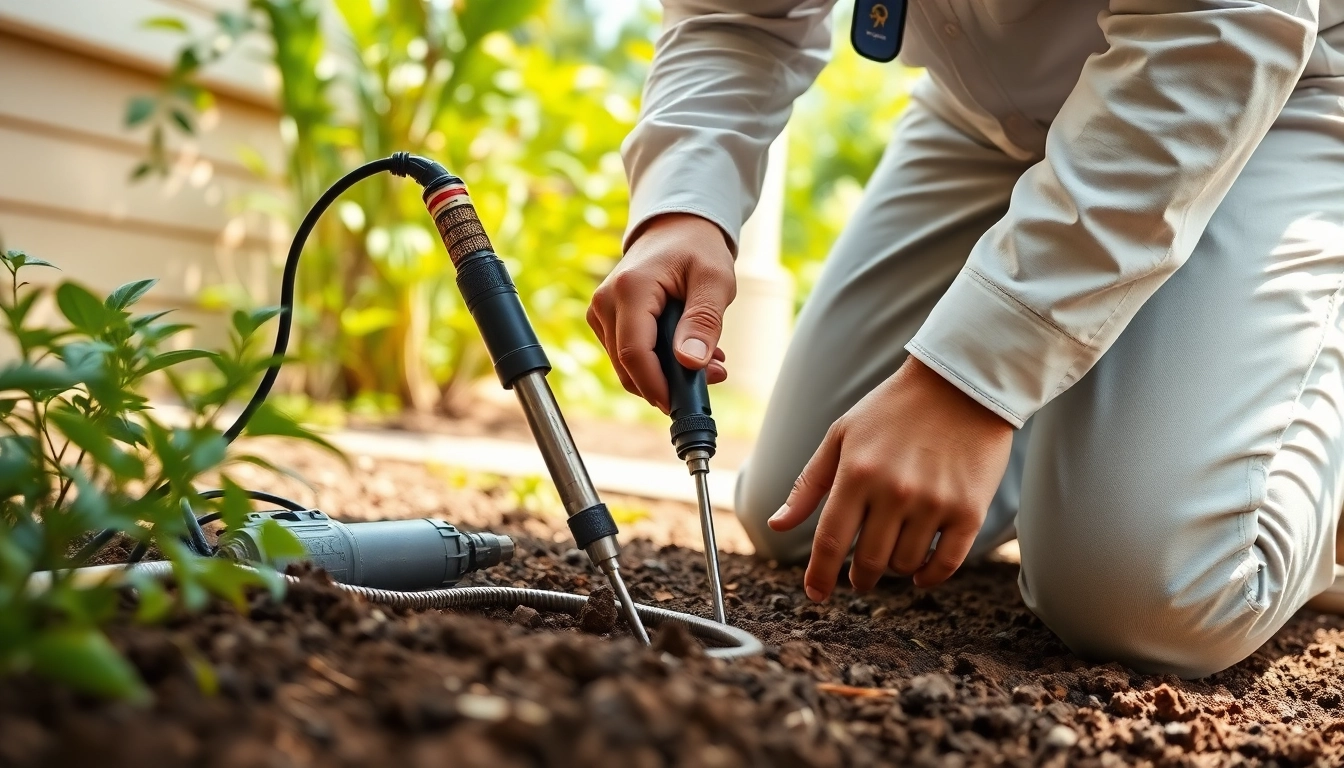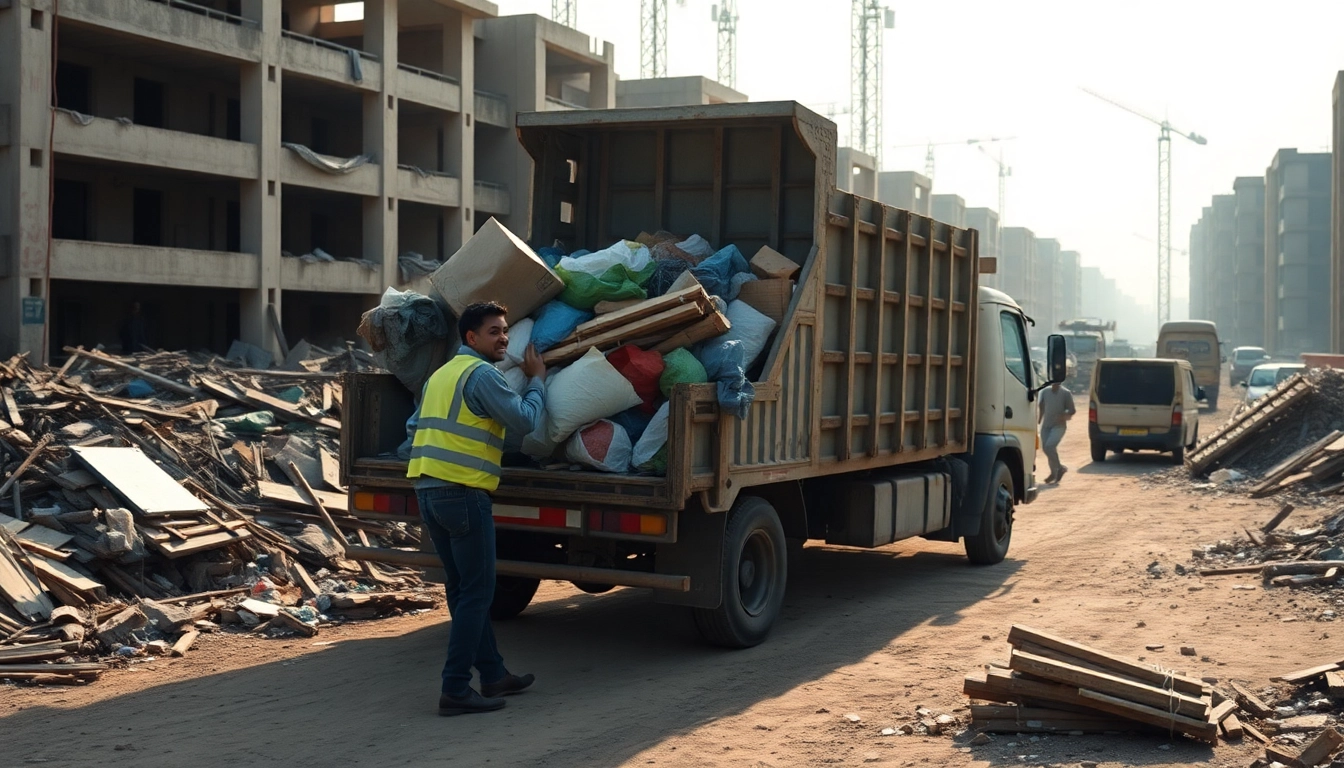What is a Termite Reticulation System?
Definition and Functionality
A termite reticulation system is a network of underground pipes installed around the perimeter of a building, designed to dispense chemical barriers that protect against termite infestations. It functions by creating a continuous chemical application zone in the soil, effectively preventing termites from accessing wooden structures. The installation of such a system is particularly prominent in areas with a high prevalence of termites, as it offers ongoing defense against these destructive pests. Homeowners often consider termite reticulation system refills as a crucial part of maintaining this barrier.
Components of a Reticulation System
The primary components of a termite reticulation system include:
- Distribution Pipes: These pipes are installed under the ground and are responsible for transporting the chemical treatments around the property.
- Injection Points: Specific points where the pest control technician will refill the system with the necessary chemicals.
- Access Chambers: These are strategically placed at intervals on the system, allowing easy access for refills and maintenance.
- Control Valves: These valves regulate the flow of the chemicals, ensuring an even distribution throughout the system.
Benefits of Installation
The installation of a termite reticulation system offers several significant benefits, including:
- Consistent Protection: The system provides an ongoing defense against termites without the need for annual retreated inspections, thereby ensuring the integrity of wooden structures.
- Cost-Effectiveness: Although the initial installation can be a considerable investment, regular refills are less expensive compared to extensive damage repair costs incurred from termite infestations.
- Convenience: Unlike traditional treatment methods, which may require extensive excavation or surface treatments, the reticulation system operates seamlessly underground, minimizing disruption to the property.
- Long-Term Solution: With proper maintenance, a termite reticulation system can effectively protect a home for years, making it a worthwhile investment.
When to Refill Your Termite Reticulation System
Typical Refill Intervals
The frequency of refills for a termite reticulation system typically ranges from every three to eight years, depending on factors such as the type of chemicals used and environmental conditions. Common practices indicate that systems using permethrin or fipronil may require more frequent refills compared to those using less volatile alternatives. Homeowners are advised to consult their pest control technician for specific recommendations related to their unique systems.
Signs That Indicate a Refill is Needed
Identifying when to refill your termite system is critical for maintaining its effectiveness. Here are several signs that indicate a refill may be necessary:
- Visible Wear and Tear: If any above-ground elements of the system, such as access points, show significant damage or deterioration, it could compromise the system’s efficacy and indicate the need for a refill.
- Decreased Efficacy: If termite activity is noticed in or near the property, or if the system fails to prevent insect sightings, a refill may be overdue.
- Regular Monitoring Reports: Professional pest control services usually provide regular updates. If a monitoring system indicates that treatment levels are abated, it’s time for a refill.
Factors Affecting Refill Frequency
Various factors can impact how often a termite reticulation system needs to be refilled:
- Type of Chemicals Used: Some chemicals have longer residual properties, while others may degrade faster under certain environmental conditions.
- Soil Composition: Sandy soils tend to absorb chemicals more quickly than clay soils, thereby affecting refill intervals.
- Climate and Weather Patterns: Extreme weather conditions, including heavy rains or droughts, can affect how long the chemicals last.
- Degree of Termite Risk: Properties in areas with overwhelming termite populations may require more frequent servicing compared to homes in less affected locations.
The Process of Refilling a Termite System
Step-by-Step Refilling Guide
The refilling process of a termite reticulation system is straightforward but typically requires professional technicians. Here’s an overview of the steps involved:
- Assessment: Before refilling, the technician assesses the condition of the system and the surrounding environment.
- Preparation: Necessary chemicals are prepared, ensuring they meet required safety standards before application.
- Accessing Injection Points: The technician carefully opens the access points of the reticulation system.
- Refilling: Using specialized equipment, the chemicals are injected into the system.
- Sealing: After filling, the access points are securely resealed to prevent contamination or loss of chemicals.
- Documentation: A refill log is updated, detailing the type and quantity of chemicals used.
Tools Required for Refilling
Refilling a termite reticulation system requires specific tools and equipment, including:
- Chemical Injection Device: Designed for the safe and precise application of chemicals.
- Wrenches and Screwdrivers: For opening and resealing access points.
- Protective Equipment: Safety gloves, goggles, and masks to protect the technician from exposure to chemicals.
- Measuring Instruments: For ensuring the correct dosage of chemicals is administered.
Safety Precautions and Best Practices
Working with chemicals poses safety risks; therefore, adherence to safety practices is paramount:
- Professional Assistance: Always hire certified pest control professionals for refilling to minimize risk and ensure compliance with safety standards.
- Proper Ventilation: Ensure the area is well-ventilated to avoid inhalation of any hazardous fumes.
- Disposing of Chemicals Responsibly: Follow local regulations for the disposal of used chemicals and containers.
- Post-Refill Monitoring: Keep an eye on the treated areas for any adverse reactions or signs of efficacy post-refill.
Cost Considerations for Termite Reticulation System Refills
Average Cost of Refills
The average cost for refilling a termite reticulation system can vary significantly based on several factors. Typically, homeowners can expect to pay anywhere from AUD 300 to AUD 600 for a refill, depending on the size of the property, the extent of the reticulation system, and the type of chemicals used. Quotes from service providers should include all components, including labor, chemicals, and any follow-up inspections.
Insurance and Warranty Considerations
Homeowners should consider the implications of insurance and warranties regarding termite refills. Many pest control businesses offer warranties that cover reproofing against termite damage; however, it’s essential to confirm whether regular refills are a stipulated requirement for maintaining coverage. Check with your insurance provider to see if pest control expenses are included in your policy, and ensure all warranties provided by your pest control service are understood and adhered to, as failure to comply may void protection.
Cost vs. Benefit: Is it Worth It?
Investing in a termite reticulation system and its periodic refills should be analyzed through the lens of preventive maintenance. Although the upfront costs can seem daunting, consider the expenses associated with repairing extensive termite damage, which can often run into thousands of dollars. Refilling the system every few years not only ensures ongoing protection but also can save homeowners substantial amounts of money in the long run. Additionally, the peace of mind that comes with knowing a reliable defense system is in place is invaluable.
Maintaining Your Termite Reticulation System Effectively
Regular Maintenance Tips
Routine checks and maintenance practices are vital for maximizing the longevity and effectiveness of your termite reticulation system. Here are some practical tips:
- Annual Inspections: Schedule annual professional inspections to evaluate the integrity of the system and detect potential issues before they escalate.
- Observe for Termite Activity: Be vigilant about signs of termite activity around your home and comply with recommendations for immediate corrective actions.
- Clean Surrounding Areas: Ensure that debris, mulch, or wood piles are kept away from the proximity of the system’s access points, as they can attract termites.
Choosing the Right Service Provider
Selecting a reputable pest control service for the installation and servicing of your termite reticulation system is crucial. Consider the following aspects when choosing a provider:
- Qualifications and Certifications: Ensure that the company has licensed professionals trained in pest control and specifically in handling reticulation systems.
- Customer Reviews: Read customer testimonials and online reviews to gauge the level of service and effectiveness.
- Warranty and Guarantee: Look for companies that offer warranties and guarantees on both their work and products used.
Long-Term Performance and Monitoring
To ensure the long-term performance of your termite reticulation system, it’s critical to engage in consistent monitoring. Pest control companies often provide services to check and monitor the effectiveness of the system over time, which can include:
- Installation of Monitoring Stations: Some systems incorporate bait stations or monitoring devices that help in early detection of termite presence.
- Regular Maintenance Check-Ups: Some providers offer bi-annual or quarterly check-ins to ensure the system remains in optimal condition.
- Adapt to Changes: Be prepared to adjust treatment plans and refilling schedules based on any changes in the environment around your home.



